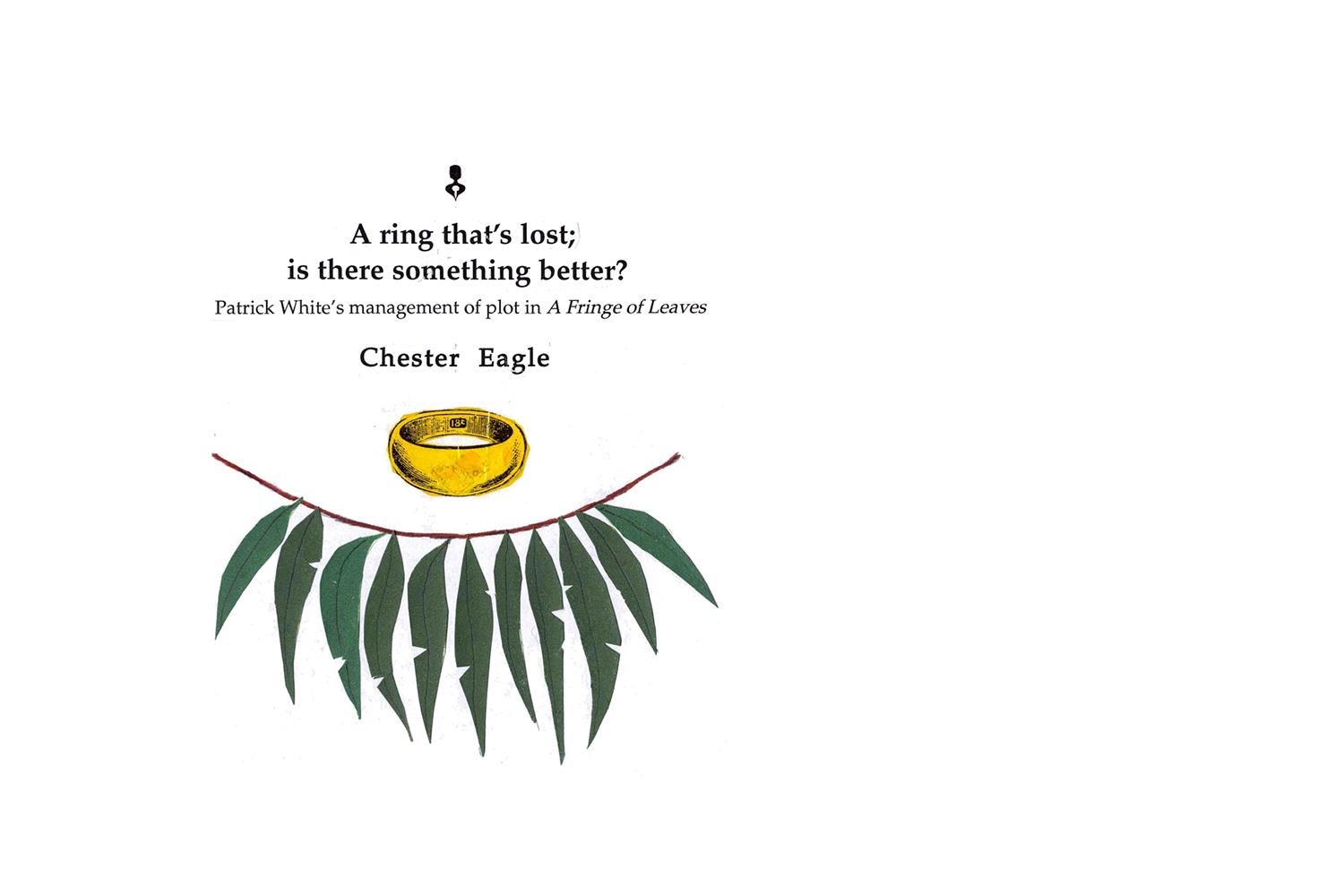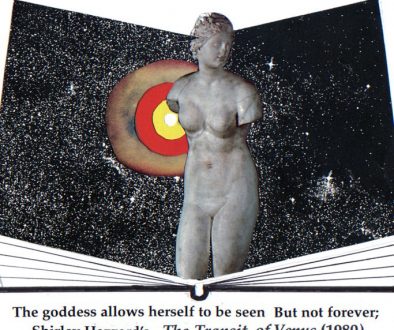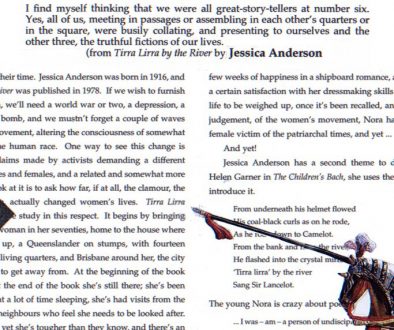15. A ring that’s lost; is there something better?

15. A ring that’s lost; is there something better?
Patrick White’s management of plot in A Fringe of Leaves.
A ring that’s lost; is there something better?
Ellen Gluyas is chosen by Austin Roxburgh to be his bride, and this she becomes, though, from the deft and natural way she slips into her humbler way of talking, we know that the change is on the outside, mostly, and that the farm girl is still there, strong, wise, giving her something she can fall back on when she needs a way out of situations which a higher level of civilisation has created but cannot resolve.
Civilisation, its limits, virtues, failings and alternatives, hovering close to it in almost every time and place, is, I think, the subject of this book, perhaps White’s most attractive, most gently human work. [read more]
Introduction:
In 1981 Patrick White published an autobiographical book called Flaws in the Glass; the Melbourne Age commissioned two reviews, one of them from Hal Porter, who said, among many things unflattering to ‘Mr White’:
Writers of my sort can be said not so much to read as to examine another writer’s work rather as one car freak examines the vehicle and driving of another car freak. One says, “Splendid vehicle! Superb driving!” Or, “Nice vehicle! Ghastly driving!” Or, “Can’t stand that kind of cumbersomely pretentious vehicle! And what bewildering and erratic driving!”
Hal confesses that the third attitude is his to the novels and plays of ‘Mr White’. I will say no more at this point about Mr White or Mr Porter, but I quote this comparison of writer and car freak because in the essays that follow I am the freak who comments on others of his kind. I know I can’t see my essays as others will see them but I imagine some readers accusing me of many things, and others, well trained, perhaps, in one or another school of literary or social criticism, who will think my observations no more than shallow or ignorant. To such people I can only say that these essays offer whatever it is that a fellow-writer can offer, and don’t pretend to offer anything else.



